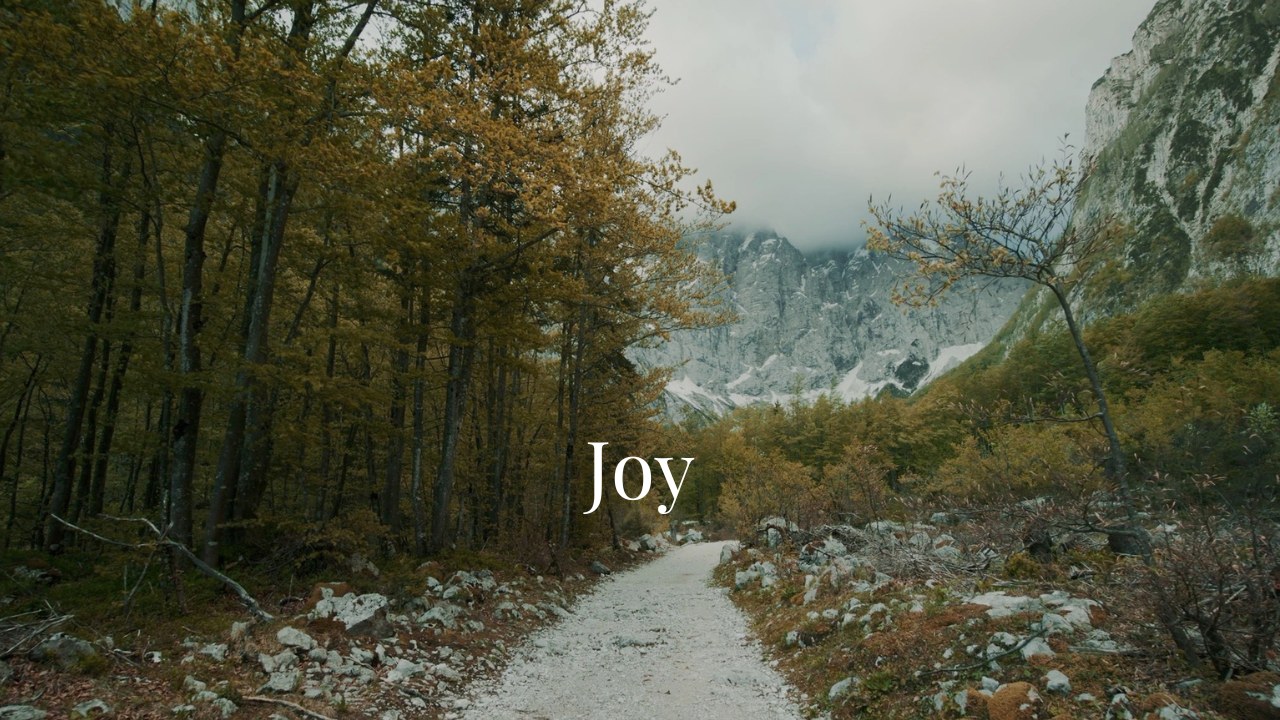The OrchardSample


Joy: 1 John 1:1-4
Read through the poem twice. After taking time on the first reading to familiarize yourself with the passage, on the second, take time to ponder and notice.
Prologue
1 As to what was from the beginning
what we have heard
what we have seen with our eyes
what we have gazed upon
and as to what we have touched—
this is the Word of Life.
2 For the Life was manifested
to us who have seen him
and now give living witness
as we proclaim to you
the eternal Life who was with Father
and was revealed to us.
3 What we have seen and heard
we proclaim to you
so that you may join
our sacred fellowship
in communion with the Father
and with his son, Christ Jesus.
4 This will give us all great joy.
Philip Comfort, The Poems and Hymns of the New Testament. Used by permission of Wipf and Stock Publishers. www.wipfandstock.com
The threefold progression of the stanzas above in 1 John is somewhat reminiscent of Paul’s progressive call to evangelism in Romans 10:13-15 only in reverse. Here in 1John, the first stanza speaks of a firsthand witness of the incarnation, the second of a proclamation to those around and the third speaks of a living relationship with the Father, the son and fellow believers as a result of the proclamation.
In the first stanza John uses quite simple, tangible language (i.e. what we have heard, seen, gazed, touched) in bearing witness of the incarnation of The Word, a somewhat abstract, intangible concept and use of language. This recalls, for me, a line from the Christmas carol O Come All Ye Faithful, which sums up this interesting paradox of the incarnation: “Word of the father, now in flesh appearing”.
The use of the senses also implies a growing closeness as it starts with hearing and ends with touch and implies a relationship. A tangible relationship of the disciples with the intangible Word.
This tangible encounter leads to bearing witness to others in the second stanza and it is a living witness in that it propagates an encounter with the eternal Life.
The third stanza restates the tangible witness but focuses on the resultant relationship with others (sacred fellowship) and with the Father and his Son.
The structure of the poem as translated by Philip Comfort uses a line configuration of abbac and the melody of music follows this structure also. This structure in the poem focuses the eye and ear to the threefold b lines and in particular the middle b line. The middle b line in each stanza is a key line for each stanza.
In the first stanza only one of the tangible senses is repeated, seeing. The middle b line is the second use of this sense and stands out in that the word gaze implies devotion or worship rather than just seeing.
The middle b line of the second stanza is the key phrase for the stanza of “living witness”. The middle b line of the third stanza “so that you may join” once more states the key idea of belonging to a relationship that is present in that stanza.
All this culminates in the concluding relational phrase that “this will give us all great joy”. Indeed it does!
Scripture
About this Plan

The Orchard combines the poetry of the New Testament with piano music inspired by those poems plus beautiful video footage. This series of videos allows space for quiet contemplation allowing the Spirit of Christ to work and speak, in order to continue to produce His fruit in our lives. In writing these piano pieces, mostly on a quiet Sunday afternoon, I have enjoyed the peace and contentment gained from meditating deeply on these poems and I pray the same for you.
More
Related Plans

Under Construction: Lessons From a Pumpkin Patch

The Magnificent Grace of God Devotional

Build Like Nehemiah Pt.2

His Name Shall Be Called

Intentionally Appreciating Our Children: A 3-Day Parenting Plan

New Beginnings & Fresh Starts - Seven Days for Turning a New Leaf

This Is the Way: A 30-Day Journey Through the Book of Acts

Relationship Road Map

Find & Follow Jesus, Quarter 1
